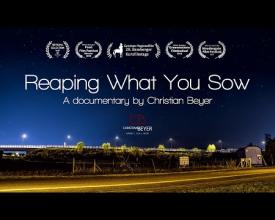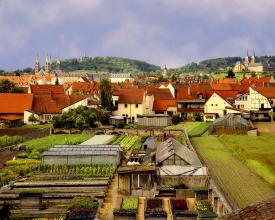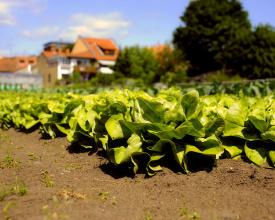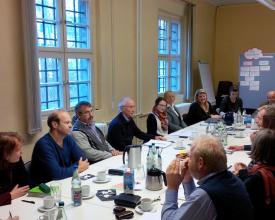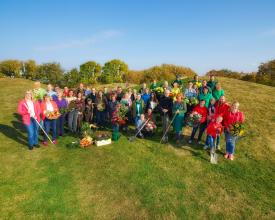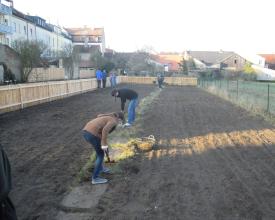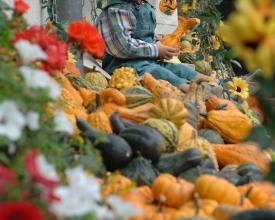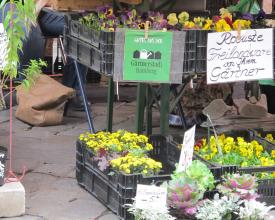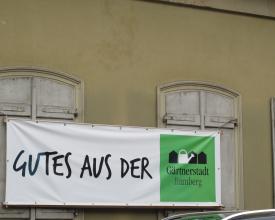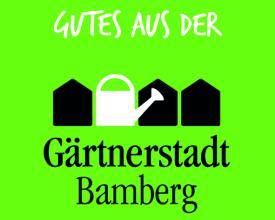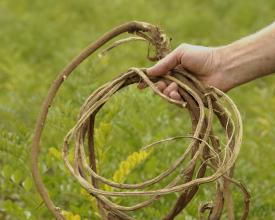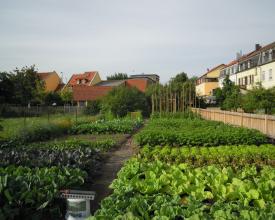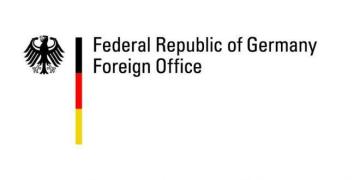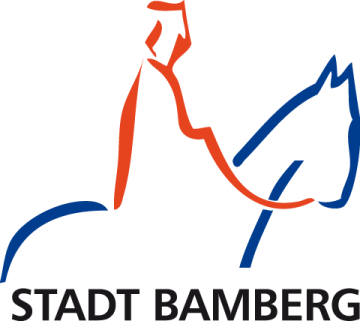
Revitalizing historically rooted urban gardening within the World Heritage City of Bamberg, Germany
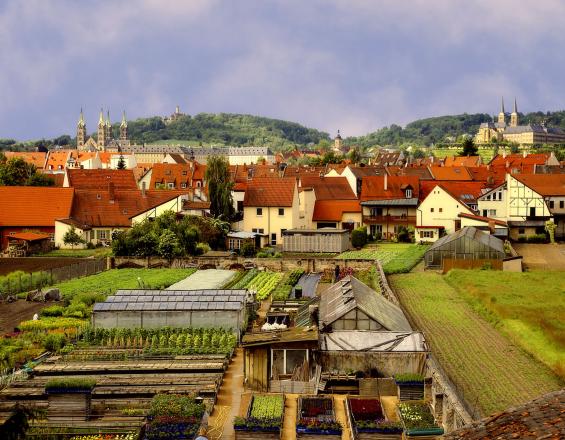
The Town of Bamberg was inscribed on the World Heritage List in 1993 under criteria (ii) and (iv) due to the preservation of its medieval layout and its historic buildings. The city illustrates the link between agriculture (market gardens and vineyards) and the urban distribution centre. The Market Gardeners’ District is an integral part of the site. However, the historic urban gardens have been progressively fragmented due to the distribution among heirs. Families who still cultivate their gardens for commercial purposes struggle. In 2012, the Bavarian State Garden Show (Landesgartenschau) was held in Bamberg and drew attention to the Market Gardeners’ District. It was in this context that traditional urban gardening has been revitalized. This effort was supported with some 1.3 million Euro from the National Investment Programme for World Heritage for awareness raising activities, a marketing campaign and the implementation of a sustainable land use approach. A follow-up programme is being developed.
Context
Challenges addressed
Social and economic factors hamper the conservation of Bamberg’s historical urban gardens. Since the World Heritage recognition of Bamberg was mostly focused on its architectural values, the urban gardens that are hidden behind private houses were often overlooked. The Market Gardeners’ District is not a self-explanatory destination. The heterogeneous ownership structure of the area limits the municipality’s influence on its development. Commercial gardening activities face spatial restrictions, which preclude the employment of machinery. High costs for essential resources such as water pose another obstacle. At the same time, increasing development pressure tempted several building activities in the past causing the loss of biodiversity and traditional local knowledge.
Location
Process
Summary of the process
The building blocks are part of an overall strategy to revitalize historically rooted urban gardening within the Town of Bamberg World Heritage site. In their entirety the building blocks can best unfold their impact enhancing each other. Establishing multi-level partnerships (BB1) among municipality, gardeners associations, educational institutions and local citizens facilitates the awareness raising (BB2) among the diverse stakeholders, achieving a common understanding of the value of the historical urban gardening and the traditional practices involved. A success factor is the diversity of actors with the gardeners as the knowledge bearers playing the key role. For the long term effect, schools are involved as well following an intergenerational approach. Finally, media acts as a multiplier for the different measures and slowly helps to increase people’s openness towards the perception of Bamberg’s gardening tradition as a joint heritage that needs to be passed on to future generations. These steps allow the development of a local brand (BB3) which enables the sustainability of the initiative with the commitment of gardeners, as well as the engagement of the local population to re-cultivate urban fields (BB4).
Building Blocks
Multi-level partnership (municipality, owners, associations, citizens' groups)
In view of the heterogeneous ownership structure in the Market Gardeners’ District, the establishment of partnerships was time-consuming. Representatives from the Municipality and its subsidiaries (e.g. City Works for water supply) had to be brought to the table together with gardeners, land owners, associations (such as the Heritage Garden or the Licorice Society) and garden lovers. The municipality approached the corresponding stakeholders in writing, by phone and organized several meetings. Privacy concerns of residents had to be carefully addressed while finding adequate uses for uncultivated land. In one case, the building of trust recently even resulted in the conversion of an abandoned nursery into a community center, where cultural events, cooking classes and exhibitions are held.
Enabling factors
- Bavarian State Garden Show held in Bamberg in 2012 that has drawn the attention of the public to Bamberg's gardening tradition
- Broad interest in local food production
- Governmental funding with the National Investment Programme for World Heritage (2009-2013)
Lesson learned
- Early stakeholder involvement is crucial: The participatory process must start with the development of measures not only when it comes to distributing tasks.
- Changes take time: People naturally resist change. Humans prefer the comfort of familiarity over the anxiety that comes with the unknown. Therefore, sufficient time needs to be planned for to involve stakeholders and get them mentally attuned to the project. The idea is not to eliminate resistance. This is not possible. Instead focus on allowing people to express their issues – sometimes people just need to be heard.
- Communication is key: Make sure you provide all stakeholders with relevant information about the project in time. Depending on rumors destroys the basis of trust.
Intergenerational approach to raising awareness for historical urban gardens’ value
While urban gardening is very much on vogue around the globe, Bamberg’s Market Gardeners’ District still stems from the Middle Ages and has not been abandoned to build residential properties like in Bath (UK) or Istanbul (Turkey). International researchers and tourists are attracted by this uniqueness alike. The local population on the other side take this fact as a given. The World Heritage Office intensively communicates national and international interest in Bamberg’s uniqueness to raise awareness for the protection of the local gardening tradition. Several documentaries about the Bamberg’s Market Gardeners’ District produced by the Bavarian State TV have strengthened the local identity and people’s pride in the gardening tradition. The international delegations that regularly visit Bamberg to experience the unique Market Gardeners’ District also contribute to the awareness concerning the value of this heritage.
In several families, the next generation has taken over the gardening business. Some of those young people even have a seat in the City Council to ensure that the interests of gardeners are heard in the political arena.
In Bamberg, every school child now visits the Market Gardeners’ District at least once to learn about food production on site.
Enabling factors
- Existing market gardens following historical traditions
- National and international interest in urban gardening
- Media coverage of urban gardening
- Interested teachers and enthusiastic kids at local schools
Lesson learned
- Make sure you don’t use local gardeners to appear in the media, but give credit to their knowledge and their skills
- Assist with film production to not waste gardeners’ time
- Approach teachers proactively
Development of a brand for local produce
An interest group of 19 market gardeners was initiated by the World Heritage Office. It holds joint activities such as the annual ‘Day of Open Market Gardens’ and publishes buyer’s guides for local produce. This consortium of gardeners is coordinated by a caretaker financed by the National Investment Programme for World Heritage (2009-2013) and the gardeners, respectively. The consortium has its own logo, which was commissioned several years ago and reads ‘Gutes aus der Gärtnerstadt’ (Good produce from the Market Gardeners’ District).
Enabling factors
- Collaboration between gardeners to exchange market knowledge.
- Finances for brand development (National Investment Programme for World Heritage).
- Coordination: Through a joint platform (https://www.gaertnerstadt-bamberg.de/), the gardeners present their range of products and services; regular meetings serve to prepare the annual Open Day of Market Gardens and to initiate other projects.
- The horticultural products (vegetables, shrubs, herbs, flowers) vary from market gardener to market gardener. This reduces the competition between them.
Lesson learned
- Explain added value of concerted action/a joint brand.
- A marketing expert has explored the strengths and weaknesses of the Market Gardeners’ District as a shopping place and tailored a communication concept that was applied thereupon. It is based on the tradition of the gardeners’ families and on the unique varieties of fresh, nutritious produce. Local pride and the consumers’ green conscience to reduce their “foodprint” by purchasing food that was grown within their community also work as a selling point.
Re-cultivating urban fields with traditional crops
Uncultivated land was used to establish a Heritage Garden with endemic plants and to re-cultivate liquorice. Europe-wide trade in seeds and liquorice root once formed a significant part of the local economy. The plant was used for medical purposes and as a sweetener. However, liquorice root from Bamberg lost its competitiveness during the 1960s. Correspondingly, the knowledge about cultivating, harvesting and processing liquorice has diminished. The Liquorice Society is committed to the re-cultivation of the plant and tries to reconstruct methods of harvesting and processing. International competitiveness no longer plays a role today. The liquorice root is now a connoisseur product for tourists.
Enabling factors
- Committed individuals: one of them owns a piece of land; others are interested in gardening, however, don’t have a garden to themselves.
- Available land.
Lesson learned
The commitment needs to be maintained beyond the initially funded period: positive media feedback as well as experiencing the community of like-minded people inspired continued commitment.
Impacts
(1) A legally binding land-use plan was adopted to protect the urban gardening fields from building development.
(2) New semi-public spaces were established such as the Heritage Garden with endemic plants as well as liquorice fields.
(3) Educational initiatives with school children have been initiated.
(4) Strong local, national and international media coverage attracted young people and led to solidarity agricultural projects and an increased touristic interest in the district.
(5) Local gardening knowledge was documented and made accessible.
(6) Along with the increased visibility of the Market Gardeners’ District and Bamberg’s gardening tradition, in 2014, Bamberg’s gardening tradition was inscribed on the Bavarian Inventory of Intangible Cultural Heritage. In 2016, it was included in the National Inventory of Intangible Cultural Heritage.
Beneficiaries
Bamberg local community, gardeners, gardeners’ associations: Oberer Gärtnerverein, Unterer Gärtnerverein, Verein Gärtner- und Häckermuseum, Sortengarten e.V., Süßholzgesellschaft, educational institutions, researchers, tourists
Sustainable Development Goals
Story
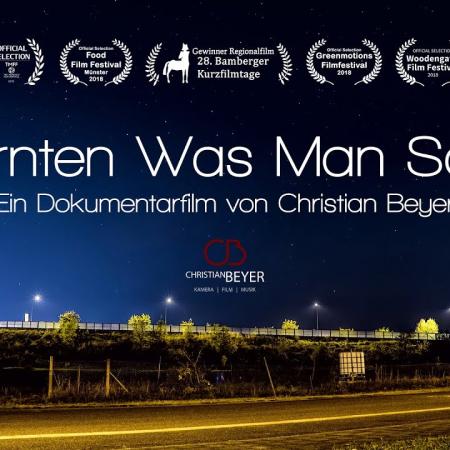
Since the Middle Ages, urban gardening has been practiced in Bamberg. The Market Gardeners’ District together with the City on the Hills and the Island District forms an integral part of the World Heritage site “Town of Bamberg”. In 2009, a survey was conducted to find out whether owners of gardening fields are open to new forms of gardening that are compatible with the limitations of the Market Gardeners’ District. The results were sobering.
Seven years after the survey, long-established gardeners started to collaborate with young families: In 2016 – when Bamberg’s gardening tradition was included in the National Inventory of Intangible Cultural Heritage - the local transition group launched its first pick-your-own garden on the outskirts of Bamberg. Filmmaker Christian Beyer accompanied this development and captured the development of this community garden. He captured how they grew their own vegetables in organic quality and how this changed their perception of food production.
The film “Reaping What You Sow” (https://www.youtube.com/watch?v=2PJ6BmU1-Tk) was awarded at the Bamberg Short Film Festival in 2018 in the category "Made in Upper Franconia”. Currently, the local transition group creates another pick-your-own garden within the historic Market Gardeners’ District. (Patricia Alberth, Head of Bamberg World Heritage Office)

